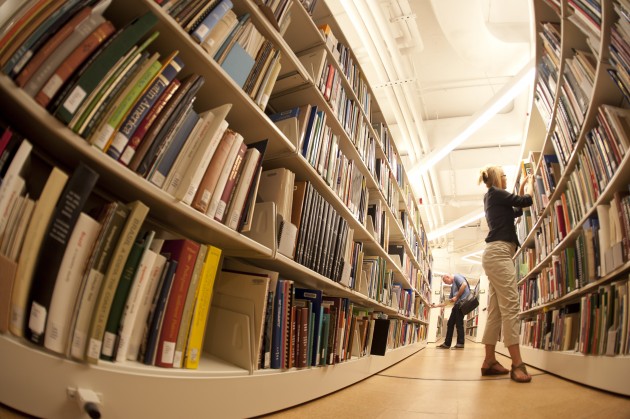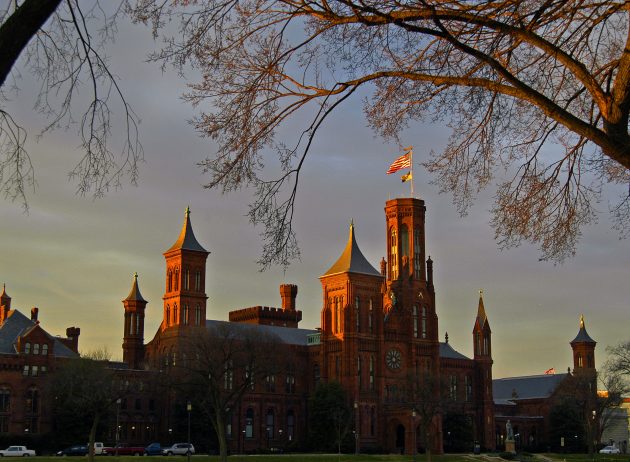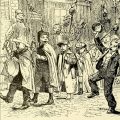By David Skorton, Secretary of the Smithsonian
Washington, D.C. is a city of symbols. The rites, rituals, and places that define Washington capture the aspirations of our nation and its citizens.
Just last month, we saw a new President take the Oath of Office on the Capitol steps, and lead a parade from the Capitol Hill to the White House. This traditional journey reflects both the separation of, and the bond between, two of the branches of our government.
One block south of the parade route is the National Mall. It too, connects the Capitol to the White House. And it too, reflects our national ambitions, values and ethos. Over the generations rather than erecting armories or palaces on the Mall, we built museums. No other nation makes as bold a statement on the primacy of education and learning as we do on our Mall. While the walk up Pennsylvania Avenue symbolizes in part our Constitution, the National Mall symbolizes our democracy – a democracy founded and continuously renewed by an informed citizenry.

David Skorton, Secretary of the Smithsonian
Even as we celebrated the peaceful transition of power, Americans remain sharply divided on many social, intellectual, and scientific matters. Some of these divisions follow along strictly partisan lines; some reflect the challenging economic situation of too many Americans, and some are founded on deeply-held cultural beliefs. Common to all is a growing lack of trust in American institutions – from government, to religious organizations, to the media. And this lack of trust leads to lack of confidence in the information we need as citizens to form educated opinions or make critical decisions. Honest disagreements on scientific and cultural issues are made worse – far worse – by the perception of “fake news” and uncertainty on whether data and information are trustworthy no matter the source.
How do we move beyond our current distrust of information toward a future in which we can begin again to attain information that we will trust? Where and how do we find venues where we can and will respectfully discuss, disagree and debate – in other words, talk with and not at each other?
More and more, the trustworthiness of information is based on the perceived trustworthiness of the source. Since our founding, this nation has consistently placed that trust in its museums and libraries. Even today, libraries and museums are considered honest purveyors of information and places for conversation on issues of local and national significance.

A network of 21 specialized research libraries make up the Smithsonian Libraries. They provide the Smithsonian’s museums and research centers with resources and services that are as diverse and deep as the collections, exhibits, and scholarship they support. This library is in the National Museum of Natural History.
Our democracy, “of the people, by the people, and for the people,” provides a perfect foundation for carrying out the timeless mission of our great cultural institutions. Now, as much as at any time in our past, our country and world are evolving, and opportunities to explore our future and our past, the wisdom and works of our ancestors, and the extraordinary potential of tomorrow’s leaders, abound.
Today’s museums are dynamic learning hubs, using the power of art and artifacts to engage, teach and inspire. Museums touch lives and transform the way people see the world and each other. As Secretary of the Smithsonian Institution, I see these conversations happening daily at our 19 museums and the National Zoo. In future months, we will host programs, welcoming thought leaders and community members to join in mutually respectful and fruitful discussions at the Smithsonian as so many of our colleagues in the 125,000 libraries and 35,000 museums are doing across our country. These cultural institutions invite our fellow citizens across America to learn, be inspired, and be uplifted.
All across this country, in cities and in rural areas, cultural institutions are helping to strengthen our communities through the arts, history, culture and science. Like the Smithsonian, these organizations are working to foster meaningful dialogue about what’s important to their communities and to the country.

Nora Lockshin, a paper conservator at the Smithsonian Institution Archives, treats a 19th-century “slave narrative” palimpsest manuscript and its inclusions. The Smithsonian Institution Archives captures, preserves, and shares with the public the history of the Smithsonian, from its inception in 1846 to the present. Records of the history of the Institution—its people, its programs, its research, and its stories—have been gathered, organized, and disseminated so that everyone can learn about the Smithsonian and its role in American history, scientific exploration, and with the promotion of international cultural understanding.
The role they play in supporting the world’s greatest democracy is broad and enduring: they collect, preserve and share the icons and artifacts that define America; they tell the story of country and our people; they convey the beauty and power of the arts; they explore and explain scientific progress, and they seek and share knowledge.
The ability of all cultural institutions, including the Smithsonian, to play this role depends on the continued trust of our leaders and the public in them. Cultural institutions cannot be seen as partisan or political.
Of course, at times, the research done by the curators, scientists and other scholars at libraries, archives and museums touches on controversial topics, as it does in our great colleges and universities. For example, Smithsonian scholars have been investigating the effects of climate change for more than 160 years. As an institution, we agree with the scientific consensus that climate change is occurring and that human activity is a factor. But we also recognize that much more research is needed. Our primary goals are to inform the public and provide our leaders with the data needed to make policy decisions. It is worth noting that while we support the current scientific consensus, we have protected the rights of a dissenting Smithsonian scientist to challenge the consensus.
In the end, many of the issues that all cultural institutions explore, from climate change to economic inequality, to race relations, may ultimately have political or partisan implications. Our role is to not advocate or judge. Instead, cultural institutions aim to provide context and information—and often the forum—to address the big issues knowledgeably and constructively. In cities and in rural areas across America, cultural institutions are helping to strengthen our communities through the arts, history, culture and science.
As each swearing in of a new President on the National Mall reminds us, our democracy depends on us.






